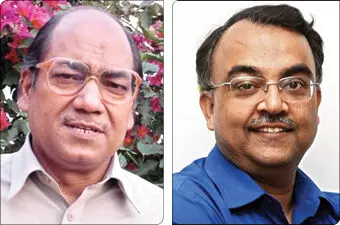Levers for the last mile
Community participation and technology are the two basic building blocks that can go a long way in transforming the lives of people at the grassroots level

Your columnist was privileged to chair the first Professor Muzammil Memorial Lecture at the 18th session of the UP Uttarakhand Economic Association organised by Prof Rajendra Prasad Mamgain at the Doon University campus last fortnight. Professor Mohammed Muzammil was a distinguished teacher of economics at Lucknow University where he played a lead role in the development of the economics department. His doctoral thesis on the financing of education at UP was an important policy document which he revised and published as a Fellow at Oxford. He also served as the VC of Dr Ambedkar University at Agra and Jyotiba Phule Rohilkhand University at Bareilly.
Amarjeet Sinha, who was after superannuation as the Rural Development Secretary to the Government of India and also served as an Advisor on the PMO, gave his address the title ‘The Last Mile: community participation and technology to transform the lives of people’.
Like others who had spoken before him, the key point was that the real challenge was not in laying down the broad principles of what should be done, but in finding resources for achieving the objectives, and even more importantly, finding the right set of people to implement it on the ground with the assistance of technology. It is indeed true that technology is the great enabler- but technology has to be understood as a means rather than as an end.
The first key takeaway from Sinha’s erudite lecture is the ‘poverty of geography’. Some regions are destined to be poor because of the absence of social and physical infrastructure – in the absence of connectivity as well as basic services in health, education, agriculture extension and markets, there is no way in which the people who are born here can compete with their counterparts who have all these resources. Even if incomes are the same, the human development indicators of people in a geography which has access to schools, hospitals, clean drinking water as well as connectivity will be much better. In fact, even with the same skill sets and competencies, what a plumber will earn in Bengaluru would be in multiples of what he would earn in Balasore or Begusarai. Therefore, investments had to be directed to these geographies to ensure that there is a level playing field.
Closely linked to this was the interrelatedness of development factors: thus, if children were underfed and undernourished, they would not be able to do well in their studies. Thus, the linkage between the ICDS, primary school enrolment and learning outcomes were all related. This underscores the importance of supplementary nutrition for lactating mothers, as well as for the youngest cohorts. School enrolment in turn had an impact on gender equality – the way boys and girls looked at and addressed each other, and if adolescent girls can continue their education up to the age of eighteen and beyond three would be an immediate fall in the incidence of child marriages. This is where the programme of giving bicycles to girls of the Higher secondary classes and beyond in West Bengal, Bihar, Orissa and Assam has made a major impact. This also prepared the ground for girls to pick up myriad skills – from nursing to plumbing to masonry and teaching.
Third, the involvement of women in the Livelihood mission has given a fillip to the SHG movement. As it is, women had been at the forefront of the SHG movement, and the success of the movement in the southern states meant substantially higher credit offtake. Now that the government of Bihar, UP, MP and Rajasthan (among others) have taken the initiative of providing skills to women in multiple capacities – as Bank Sakhi, Krishi Sakhi, and Pashu Palan Sakhi – the task of extension has become more meaningful, for one feature of the aspirational districts is the massive migration of the male folks to urban centres, thereby leading to feminization of agriculture, even as the land holding size was becoming even smaller. He made the point that the recovery of micro-loans to SHGs was substantially higher than loans extended to enterprises under Mudra, because women were much better borrowers, and were now using their loans, not just for consumption, or redemption of previous loans, but for new enterprises.
The fourth takeaway was that the community had to take responsibility. This meant looking beyond the elected panchayat and reaching out to the Gram Sabhas- which were actually the basic unit of the panchayat raj system. The power of the community would not only minimise (if not eliminate corruption) but also give a fillip up to proper resource planning. This was important in the context of the massive decentralization of funds to the Panchayats under the Finance Commissions’ Gram Swaraj Abhiyan (GSA) was a positive step in this direction. From 2018, 63974 purposively selected villages have been given funds for LPG, electricity, immunization, Bank account, accident and life insurance as well as LED bulbs.
Last, but not least, technology could, and ought to play the lead role. However, technology was a means, not an end in itself. Technology can provide a wonderful connection to the community, especially the last mile. The universalization of financial inclusion has ensured that there is a direct transfer of benefits: now the challenge was to ensure that funds are utilised largely for the purposes for which they were given. This is where geo-tagging and monitoring by the community could help. Technology and community anticipation could actually work together, hand in hand, to deliver the intended policy outcomes.
The writer superannuated as the Director of the LBSNAA after 36 years in the IAS, and is currently a historian and policy analyst



